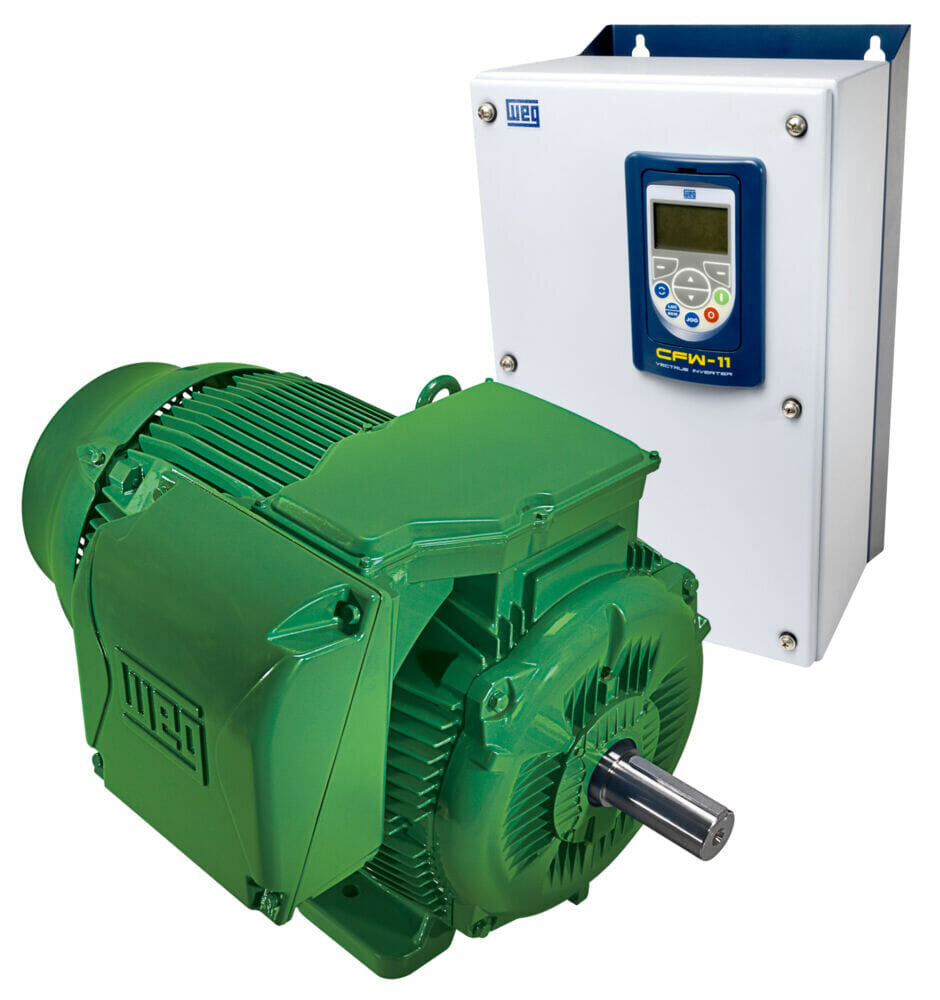Marek Lukaszczyk, European and Middle East marketing manager at the global manufacturer and supplier of motors and drive technology, WEG, gives us his top five reasons for selecting variable speed drives (VSDs) for pump applications.
Superiority over on-off control pumps
For someone seeking a low-price solution to pump control, an on–off pump will feature little more than a pressure switch, bladder tank and flow switch. A bladder tank is required to avert any potential issues that arise from pressure peaks and troughs, such as damaged pipework.
As the name suggests, this pump type’s main limitation is that it only offers two speeds: maximum or stopped. Starting up from standstill can have some problematic effects, including premature wear to pump seals and bearings, as well as excessive stress on the motor’s winding, which can consequently prompt premature failure.
Instead, most pump users opt for either a VSD or soft starter. While the latter can reduce known effects such as water hammering due to pressure surge, a VSD can deliver the same outcome, but with the added advantage of providing complete pump speed control during run mode.
Improved efficiency
In common industrial systems such as centrifugal pumps, inline control (throttling) valves are sometimes deployed to regulate flow or pressure. However, there is a significant drawback with using such a device. Inline valves are known to be a notable source of energy loss, primarily because they cause a flow path restriction that in turn elevates pressure.
Rather than changing the system resistance to modulate flow, as is the case with a throttling valve, the use of a VSD sees the pump speed change. In simple terms, variable-speed control alters the energy input rather than relying on a valve to strip system energy. Dramatic savings in electricity consumption are the common outcome.
Enhanced flow and pressure control
The use of a VSD to control flow means no additional restriction is added to the piping, as is the case with a throttling valve. In addition to energy savings, improved response means better flow control.
For pump systems where the flow demand often drops, throttling valves have further limitations. In such situations, this type of valve will often function at lower throttle positions, thus wasting even more energy through a greater pressure drop across the valve.
Eliminate systems elements
Opting for a VSD over an inline valve will present users with the opportunity to eliminate various system elements without impacting on functionality. When using a throttling valve, a certain amount of pipework is required to position the valve where it can be accessed for adjustment. Compare this with a VSD and the difference is plain to see: no valve, no need for associated pipework, and no losses from the valve or pipework.
There is another benefit here. Thanks to the removal of pipe and valve losses, there is the option to use a lower-power, less expensive pump. The upshot is that the cost justification for the VSD becomes even more attractive.
More intelligence
The latest microprocessor-based, modular VSDs have the capability to carry out multiple functions that at one time had to be performed by PLCs. Modern drives allow each module or process to operate almost autonomously, while at the same time integrating with the overall processes for sequencing Industry 4.0 data and safety functions via open yet secure communication networks.
In addition, having an intelligent motion controller embedded in each networked drive represents a more cost-effective solution than employing a standalone PLC. A further disadvantage with a PLC-based system is that high-performance networks are required to handle the necessary motion control. Instead, by letting an intelligent drive do the work, control is given to the actual elements being run, thus enhancing performance.
For example, the Pump Genius process control software is a customisable feature of WEG VSDs which manages and monitors up to 6 pumps in a coordinated system. Designed to minimise downtime and maximise energy savings, the software provides control and protection as well as management of cycle hours and master and slave designation. It also monitors and controls system pressure and flow with available faults and alarms referencing low and high set points.
To discover more about the benefits of using a VSD, download WEG’s latest whitepaper Guide to Variable Speed Drive Applications here.





